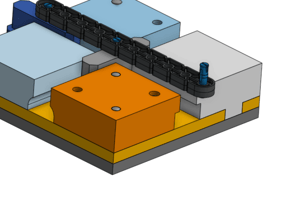Podcast
Questions and Answers
Which of the following best describes the term intersexuality?
Which of the following best describes the term intersexuality?
- A set of chromosomes that determine a person's biological sex.
- A condition where an individual identifies as neither male nor female.
- A naturally occurring variation in humans and animals where genitals appear to be a mix of male and female organs. (correct)
- A surgical procedure to align physical characteristics with one's gender identity.
The presence of XX chromosomes always indicates a male biological sex.
The presence of XX chromosomes always indicates a male biological sex.
False (B)
What social expectation is often set for children once parents are aware of their child's sex?
What social expectation is often set for children once parents are aware of their child's sex?
How the child should behave.
People who are attracted to both sexes are referred to as _________.
People who are attracted to both sexes are referred to as _________.
Match the following terms with their descriptions:
Match the following terms with their descriptions:
What is the primary function of the male sexual anatomy?
What is the primary function of the male sexual anatomy?
Gender identity is solely determined by biological sex.
Gender identity is solely determined by biological sex.
What are sex chromosomes?
What are sex chromosomes?
The term __________ is used to describe people whose biological sex does not align with their gender identity.
The term __________ is used to describe people whose biological sex does not align with their gender identity.
What hormones are typically associated with females?
What hormones are typically associated with females?
Flashcards
What is biological sex?
What is biological sex?
The biological dimension of your gender and sexuality, determined by sexual anatomy and physiology related to reproduction.
What is hermaphroditism?
What is hermaphroditism?
Condition where genitals appear to be a mix of male and female characteristics. Now referred to as intersexuality.
What are sex chromosomes?
What are sex chromosomes?
Protein structures containing genetic material, used to determine biological sex (XX or XY).
What is gender?
What is gender?
Signup and view all the flashcards
What is gender identity?
What is gender identity?
Signup and view all the flashcards
Who are transgenders?
Who are transgenders?
Signup and view all the flashcards
What is sexual orientation?
What is sexual orientation?
Signup and view all the flashcards
Who is a heterosexual?
Who is a heterosexual?
Signup and view all the flashcards
Who is a homosexual?
Who is a homosexual?
Signup and view all the flashcards
Who is bisexual?
Who is bisexual?
Signup and view all the flashcards
Study Notes
Sex, Gender, and Sexuality
- Sex is the biological dimension of gender and sexuality, referring to biological or physical characteristics.
- It relates to identity based on sexual anatomy and physiology relevant to reproduction.
- Sex is typically determined by examining genitals, which are external organs associated with reproduction.
- At birth, a child with a penis and testicles is categorized as male, while a child with a vagina is categorized as female.
- Intersexuality, formerly known as hermaphroditism, refers to cases where a baby's genitals appear to be a mix of male and female organs, making sex classification difficult, and occurs in approximately 1 in 1,500 births.
- Sex chromosomes, such as XY for males and XX for females, are used to determine sex.
- Hormone levels, like higher testosterone in males (associated with sex drive and aggression) and higher estrogen and progesterone in females (associated with lactation, menstruation, and other female reproductive functions), are used as markers.
Gender
- Humans create social norms that attach cultural meanings to things, including sex, which influences gender expectations.
- Awareness of a child's sex leads to the attachment of social and cultural meanings, setting expectations for behavior and treatment.
- Adults manifest social interpretations of a baby's sex through colors, such as blue for boys and pink for girls.
- Names, toys, and apparel are chosen based on the interpreted sex of the baby.
- Gender identity refers to one's sense of self as a man, woman, or neither.
- Transgenders are individuals whose biological sex does not align with their gender identity.
- Transgender people may undergo gender reassignment surgery for alignment, though factors like belief systems, culture, and economics can influence this decision.
Sexual Orientation
- Sexual orientation pertains to emotional and sexual attraction to a person, which typically develops around ages 6 to 8.
- Heterosexual individuals are attracted to the opposite sex.
- Homosexual individuals are attracted to the same sex (gay or lesbian).
- Bisexual individuals are attracted to both sexes.
- LGBT refers to the lesbian, gay, bisexual, and transgender community.
The Biological Female
- The female external genitalia includes:
- The vulva, encompassing all external genital structures.
- Mons veneris, pads of fatty tissue between the pubic bone and skin.
- Labia majora, the outer lips surrounding other structures.
- Prepuce, the clitoral hood (foreskin above and covering the clitoris).
- Clitoris, with the glans (head), shaft, and crura (root), highly sensitive to stimulation.
- Labia minora, the inner lips surrounding the vestibule, containing sweat and oil glands, extensive blood vessels, and nerve endings.
- Vestibule, surrounding the urethral opening and vagina, highly sensitive with extensive blood vessels and nerve endings.
- Urethral opening, the end of the tube connecting to the bladder, used for urination.
- Vaginal opening, also called the introitus.
- Perineum, the area of skin separating the genitalia from the anus; distance is less in females than in males.
The Biological Male
- The male sexual anatomy is designed for sperm production and delivery to fertilize the female ovum.
- The male external genitalia includes:
- Prepuce, the foreskin covering the head of the penis, removed during circumcision.
- Penis, with the glans (head), shaft, and root, highly sensitive to stimulation.
- Corona, the rim of the glans where it arises from the shaft.
- Frenulum, a thin strip of skin connecting the glans and shaft, located on the underside of the penis.
- Scrotum, a sac enclosing the two compartments housing the testes.
- Urethral opening, a tube connected to the bladder used for urination and ejaculation.
- Perineum, the area of skin separating the genitalia from the anus; distance is greater in males than in females.
Studying That Suits You
Use AI to generate personalized quizzes and flashcards to suit your learning preferences.




